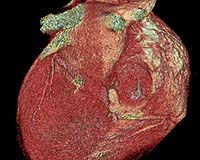| . |  |
. |
University Park PA (SPX) May 05, 2010 A water feature found in the Maya city of Palenque, Mexico, is the earliest known example of engineered water pressure in the new world, according to a collaboration between two Penn State researchers, an archaeologist and a hydrologist. How the Maya used the pressurized water is, however, still unknown. "Water pressure systems were previously thought to have entered the New World with the arrival of the Spanish," the researchers said in a recent issue of the Journal of Archaeological Science. "Yet, archaeological data, seasonal climate conditions, geomorphic setting and simple hydraulic theory clearly show that the Maya of Palenque in Chiapas, Mexico, had empirical knowledge of closed channel water pressure predating the arrival of Europeans." The feature, first identified in 1999 during a mapping survey of the area, while similar to the aqueducts that flow beneath the plazas of the city, was also unlike them. In 2006, an archaeologist returned to Palenque with a hydrologist to examine the unusual water feature. The area of Palenque was first occupied about the year 100 but grew to its largest during the Classic Maya period 250 to 600. The city was abandoned around 800. "Under natural conditions it would have been difficult for the Maya to see examples of water pressure in their world," said Christopher Duffy, professor of civil and environmental engineering. "They were apparently using engineering without knowing the tools around it. This does look like a feature that controls nature." Underground water features such as aqueducts are not unusual at Palenque. Because the Maya built the city in a constricted area in a break in an escarpment, inhabitants were unable to spread out. To make as much land available for living, the Maya at Palenque routed streams beneath plazas via aqueducts. "They were creating urban space," said Kirk French, lecturer in anthropology. "There are streams in the area every 300 feet or so across the whole escarpment. There is very little land to build on." These spring-fed streams combined with approximately 10 feet of rain that falls during the six-month rainy season also presented a flooding hazard that the aqueducts would have at least partially controlled. The feature the researchers examined, Piedras Bolas Aqueduct, is a spring-fed conduit located on steep terrain. The elevation drops about 20 feet from the entrance of the tunnel to the outlet about 200 feet downhill. The cross section of the feature decreases from about 10 square feet near the spring to about a half square foot where water emerges form a small opening. The combination of gravity on water flowing through the feature and the sudden restriction of the conduit causes the water to flow out of the opening forcefully, under pressure. "The conduit could have reached a theoretical hydraulic head limit of 6 meters (about 20 feet)," said Duffy. At the outlet, the pressure exerted could have moved the water upwards of 20 feet. "The experience the Maya at Palenque had in constructing aqueducts for diversion of water and preservation of urban space may have led to the creation of useful water pressure," said French. The Piedras Bolas Aqueduct is partially collapsed so very little water currently flows from the outlet. French and Duffy used simple hydraulic models to determine the potential water pressure achievable from the Aqueduct. They also found that Aqueduct would hold about 18,000 gallons of water if the outlet were controlled to store the water. One potential use for the artificially engineered water pressure would have been a fountain. The researchers modeled the aqueduct with a fountain as the outlet and found that even during flood conditions, water would flow in the aqueduct, supplying the fountain, and above ground in the channel running off the slope. Another possibility could be to use the pressure to lift water onto the adjacent residential area for use as wastewater disposal. "The palace has features that suggest something similar," said French
Share This Article With Planet Earth
Related Links Penn State All About Human Beings and How We Got To Be Here
 China to see heart disease surge by 2030: study
China to see heart disease surge by 2030: studyWashington (AFP) May 4, 2010 China could see a 73-percent jump in heart disease by 2030 due to aging, smoking, high blood pressure and other risk factors, researchers who reviewed health since China's economic reforms in the 1980s said Tuesday. "China is a prime example of a middle income nation in transition. The country's standard of living and life expectancy have improved for many, but aging, dietary changes and les ... read more |
|
| The content herein, unless otherwise known to be public domain, are Copyright 1995-2010 - SpaceDaily. AFP and UPI Wire Stories are copyright Agence France-Presse and United Press International. ESA Portal Reports are copyright European Space Agency. All NASA sourced material is public domain. Additional copyrights may apply in whole or part to other bona fide parties. Advertising does not imply endorsement,agreement or approval of any opinions, statements or information provided by SpaceDaily on any Web page published or hosted by SpaceDaily. Privacy Statement |